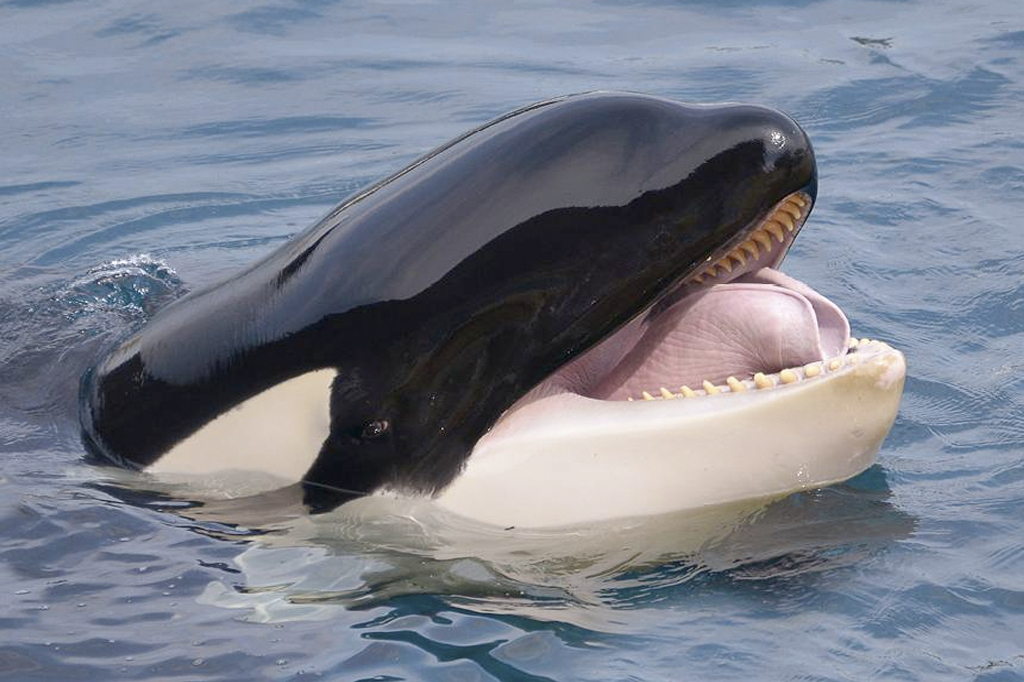The killer whale
Oceanic dolphin family

The killer whale or orca is a toothed whale belonging to the oceanic
dolphin family, of which it is the largest member. Killer whales have a
diverse diet, although individual populations often specialize in
particular types of prey. Some feed exclusively on fish, while others
hunt marine mammals such as seals and other species of dolphin.
They have been known to attack baleen whale calves, and even adult whales.
Killer whales are apex predators, as no animal preys on them. A
cosmopolitan species, they can be found in each of the world's oceans in
a variety of marine environments, from Arctic and Antarctic regions to
tropical seas, absent only from the Baltic and Black seas, and some
areas of the Arctic Ocean.

Killer whales are highly social; some populations are composed of matrilineal family groups (pods) which are the most stable of any animal species. Their sophisticated hunting techniques and vocal behaviours, which are often specific to a particular group and passed across generations, have been described as manifestations of animal culture.
A typical killer whale distinctively bears a black back, white chest and sides, and a white patch above and behind the eye. Calves are born with a yellowish or orange tint, which fades to white. It has a heavy and robust body with a large dorsal fin up to 1.8 m (5 ft 11 in) tall. Behind the fin, it has a dark grey "saddle patch" across the back. Antarctic killer whales may have pale grey to nearly white backs. Adult killer whales are very distinctive, seldom confused with any other sea creature.

Wild killer whales are not considered a threat to humans and no fatal attack on humans has ever been documented, but there have been cases of captive orcas killing or injuring their handlers at marine theme parks. Killer whales feature strongly in the mythologies of indigenous cultures, and their reputation in different cultures ranges from being the souls of humans to merciless killers.
👉🏼 Learn more about Orcas

